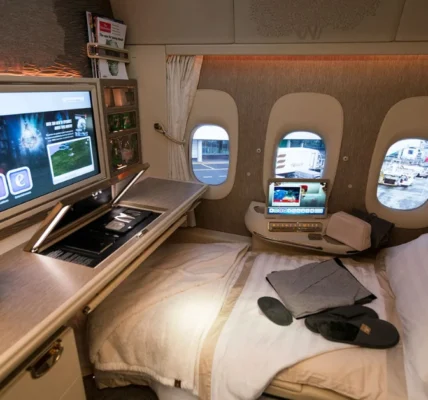Traveling is supposed to be about escaping the grind, exploring new places, and creating lasting memories. But let’s face it, managing your finances on the go can quickly turn into a stress-fest. From remembering bill due dates to tracking expenses in foreign currencies, it’s easy for financial worries to overshadow your adventures.
The good news? You don’t have to micromanage your money while you’re globetrotting. By automating the boring, time-consuming stuff like paying bills, budgeting, and saving, you can relax, knowing that your financial life is running smoothly in the background. The less you need to worry about, the more you can focus on enjoying the journey.
In this guide, I’ll walk you through 10 practical ways to simplify your financial life before you head out on your next trip. Let’s dive in.
1. Set Up Automatic Bill Payments
One of the most annoying things about being on the road is dealing with bills. But with automatic bill payments, you can set it and forget it. Whether it’s rent, utilities, or credit card payments, automating these ensures you won’t miss a due date even if you’re in a different time zone. Missing a payment while you’re away can result in penalties or service disruptions, but automation takes care of this for you, preventing late fees and interest charges.
And if you’re really busy or forgetful, setting up auto-pay for at least the minimum on your credit cards can save you from hefty interest charges. Plus, when you come back home, you’ll know your bills are covered, and there won’t be any surprises waiting in your mailbox.
2. Use a Budgeting App to Track Expenses
Anyone who’s traveled knows how easy it is to overspend. Between fluctuating exchange rates and the temptation of last-minute souvenirs, sticking to a budget is tough. Budgeting apps like Mint or YNAB (You Need a Budget) make it easy to track expenses in real-time, providing a clear snapshot of your spending. You can even link your accounts to automatically categorize each expense so you don’t have to manually track everything.
Many apps allow you to set custom spending limits and create alerts for when you’re getting close to exceeding your budget. With a budgeting app, you can keep track of how much you’re spending on food, accommodation, and entertainment, which means no more surprise overcharges at the end of your trip. Plus, knowing exactly where your money is going allows you to make better spending decisions.
3. Schedule Automatic Transfers to Your Savings
Saving for a trip shouldn’t feel like a burden. Set up automatic transfers to a travel savings account, and watch your travel fund grow without even thinking about it. You can set it for weekly or monthly transfers, depending on your financial situation, so that by the time your trip arrives, you’ll have the funds available without scrambling to find the money.
Even better, look for high-yield savings accounts so your money works for you while you’re off exploring. Some accounts offer interest rates that allow your savings to grow passively, turning your travel fund into a bigger pot without you needing to put in extra work. Automating these deposits also ensures you don’t dip into this money for non-travel expenses.
4. Put Recurring Expenses on a Rewards Credit Card
If you’re paying for subscriptions like Netflix, Spotify, or even your gym membership, why not get something back in return? Use a rewards credit card for your recurring expenses. Many travel credit cards offer points or cash back for every dollar spent, so by putting all your monthly bills and subscriptions on a rewards card, you can earn free flights, hotel stays, or even cash back to offset your travel costs.
Not only can you rack up points for free travel, but you’ll also avoid late fees and improve your credit history. The best part is that automating these payments via your rewards card means you don’t have to manually track payments each month, letting you enjoy the benefits of both automation and rewards.
5. Choose a Travel-Friendly Bank Account
Not all bank accounts are created equal, especially when you’re traveling. Some banks charge you for international ATM withdrawals or foreign transactions, making it more difficult to access your money abroad. Withdrawing cash from ATMs overseas can quickly add up in fees, and paying for purchases with a regular credit card can be costly if foreign transaction fees are involved.
Look for a travel-friendly account that doesn’t have those pesky fees, and set up direct deposit so your income keeps flowing, no matter where you are. Banks like Charles Schwab or Revolut offer accounts designed for travelers with minimal to no foreign transaction fees and free ATM withdrawals worldwide. This can save you a significant amount of money in the long run, so you can focus on the trip itself rather than financial logistics.
6. Automate Your Investment Contributions
Just because you’re on vacation doesn’t mean you should put your financial growth on hold. Automating your investment contributions is an easy way to ensure your money continues to work for you, even when you’re on a beach in Bali. Robo-advisors like Betterment or Wealthfront make it simple to automate investments, so you don’t have to constantly monitor the market.
By setting up recurring contributions to your investment account, you’ll be able to continue building wealth while you’re away. This is especially important if you’re saving for long-term goals like retirement or purchasing property. You can even take advantage of market dips while you’re away without needing to check in on your investments constantly. Automation keeps your financial goals moving forward, no matter where you are.
7. Create Passive Income Streams
Who wouldn’t want to earn money without lifting a finger? Whether it’s through dividends, rental income, or selling digital products, passive income is a game-changer for travelers. You’ll continue to earn money while you’re away, without needing to do anything extra.
Automate the payout or deposit of your passive income streams so you can keep earning money while you focus on sightseeing. For example, if you have rental properties, set up automatic rent payments and direct deposits into your bank account. Similarly, if you’ve created digital products like eBooks or courses, you can automate sales and payment processing so the income continues to flow even when you’re not working.
8. Use a Digital Wallet for Seamless Payments
Carrying a stack of credit cards while traveling isn’t just cumbersome—it’s risky. Digital wallets like Apple Pay, Google Pay, and PayPal let you store your cards and make payments with a tap of your phone. This eliminates the need for carrying multiple cards while minimizing the risk of losing one while traveling.
Not only does it keep your wallet lighter, but you’ll also have quick access to any travel rewards points or cards you’ve linked to your digital wallet. Many digital wallets also allow for contactless payments, which is convenient in places where using cash or a physical card may be less efficient, especially in countries where digital payments are more common.
9. Optimize Your Subscriptions Before You Leave
While you’re off enjoying new places, some subscriptions might be taking money out of your account without you even noticing. Take a minute to pause or cancel things like gym memberships, meal kit deliveries, or streaming services that you won’t use while traveling. It’s easy to forget about subscriptions that aren’t immediately useful, and these small charges can add up over time.
On the other hand, adding travel-friendly subscriptions like an international phone plan or VPN service can enhance your experience without additional stress. These services can save you from hefty roaming charges, help you access content from back home, and keep you secure while browsing on public Wi-Fi networks. Making sure you have the right subscriptions in place ensures that you won’t be paying for things you’re not using.
10. Keep an Accessible Emergency Fund
Emergencies can happen anywhere, and when you’re abroad, they can be especially stressful. A well-stocked emergency fund gives you peace of mind, knowing you’ll be able to handle things like medical emergencies or last-minute trip changes. It’s easy to think that emergencies won’t happen to you, but being prepared will help you feel more at ease while exploring.
Make sure your emergency fund is easily accessible, and set up automated transfers into this fund to keep it growing, even when you’re away. If possible, keep the fund in an account with quick access, so you can withdraw it in a pinch. Having an emergency fund in place allows you to deal with unexpected situations, like a missed flight or medical issue, without using expensive credit cards or resorting to loans.
Conclusion
Traveling doesn’t have to come with the constant worry of managing your finances. With a little upfront planning and automation, you can eliminate the stress of paying bills, budgeting, and saving while on the go. The key is to set it all up before you leave, so everything runs automatically in the background.
And if full automation feels a bit overwhelming, don’t stress—start small. Automate one or two things (like bill payments or budgeting), and build from there. The more you automate, the more freedom you’ll have to enjoy your trip, knowing your finances are in good hands.
Take control of your financial life today, and imagine yourself on a stress-free vacation tomorrow—your future self will thank you!




